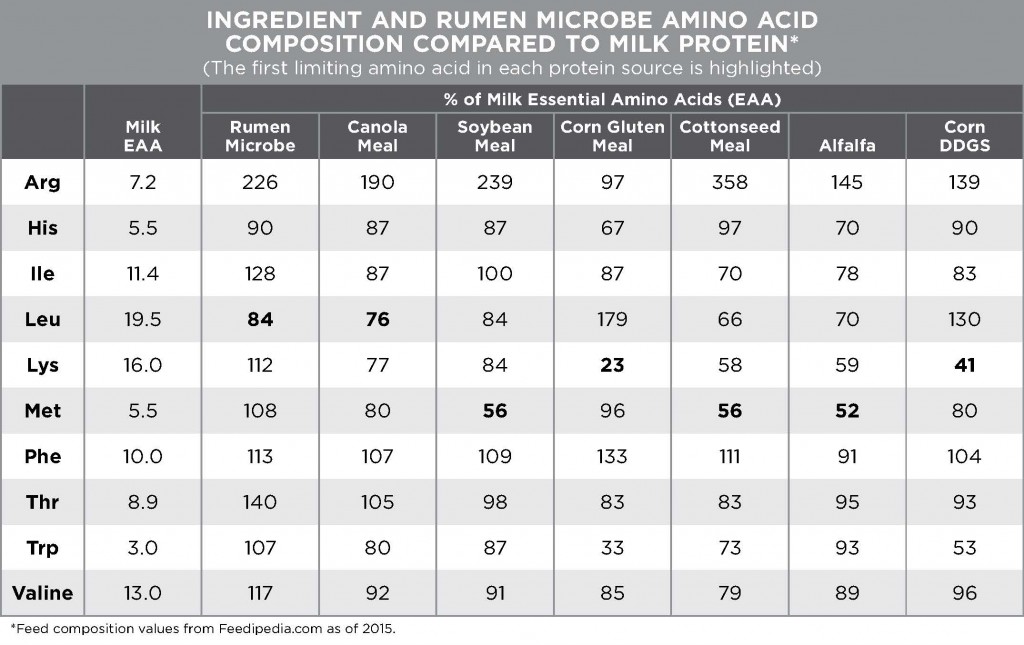

December 2015
The value of a protein for ruminants depends on three factors:
As we focus on amino acids, we’ll take another look at the amino acid profiles of different ration ingredients, as discussed previously.
For dairy cows, amino acid profiles need to be considered after the amino acids found in the microbial protein as well as those from the forage in the ration are taken into account. So, the equations for amino acid requirements are:
Ideally, the essential amino acids that are needed should supply profiles that are similar to milk. Recognizing that amino acid requirements depend on needs for maintenance, and that amino acids are not used with 100 percent efficiency, we can use the ingredient chart here to compare values.
The chart below shows that, relative to milk, canola meal has only 76 percent as much leucine. Therefore, if canola meal was the only source of rumen undegraded protein (RUP) in the diet, 132 percent of the protein required would need to be included in the diet.
Looking at corn distillers’ grains (DDGS), lysine is the most limiting amino acid with just 41 percent relative to milk. If corn distillers’ grains were the only source of RUP, then almost two-and-a-half times (244 percent) the protein needed would have to be included in the ration to meet the amino acid requirements.
In general, we can see that canola meal is an ingredient with an overall well-balanced amino acid profile. While not perfect, its first limiting amino acid is still not too far from milk protein and its profile allows for a variety of ration-balancing options.
